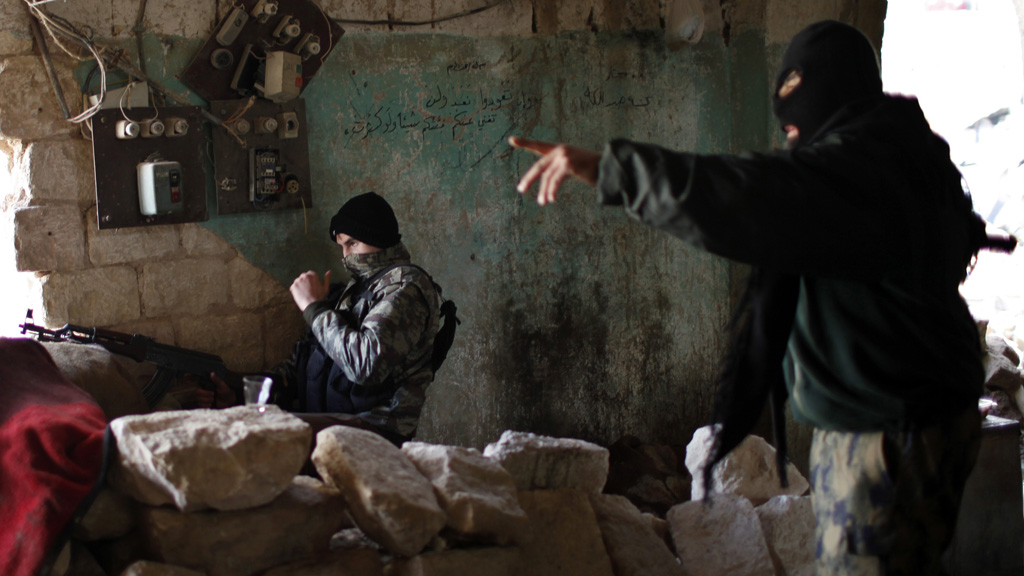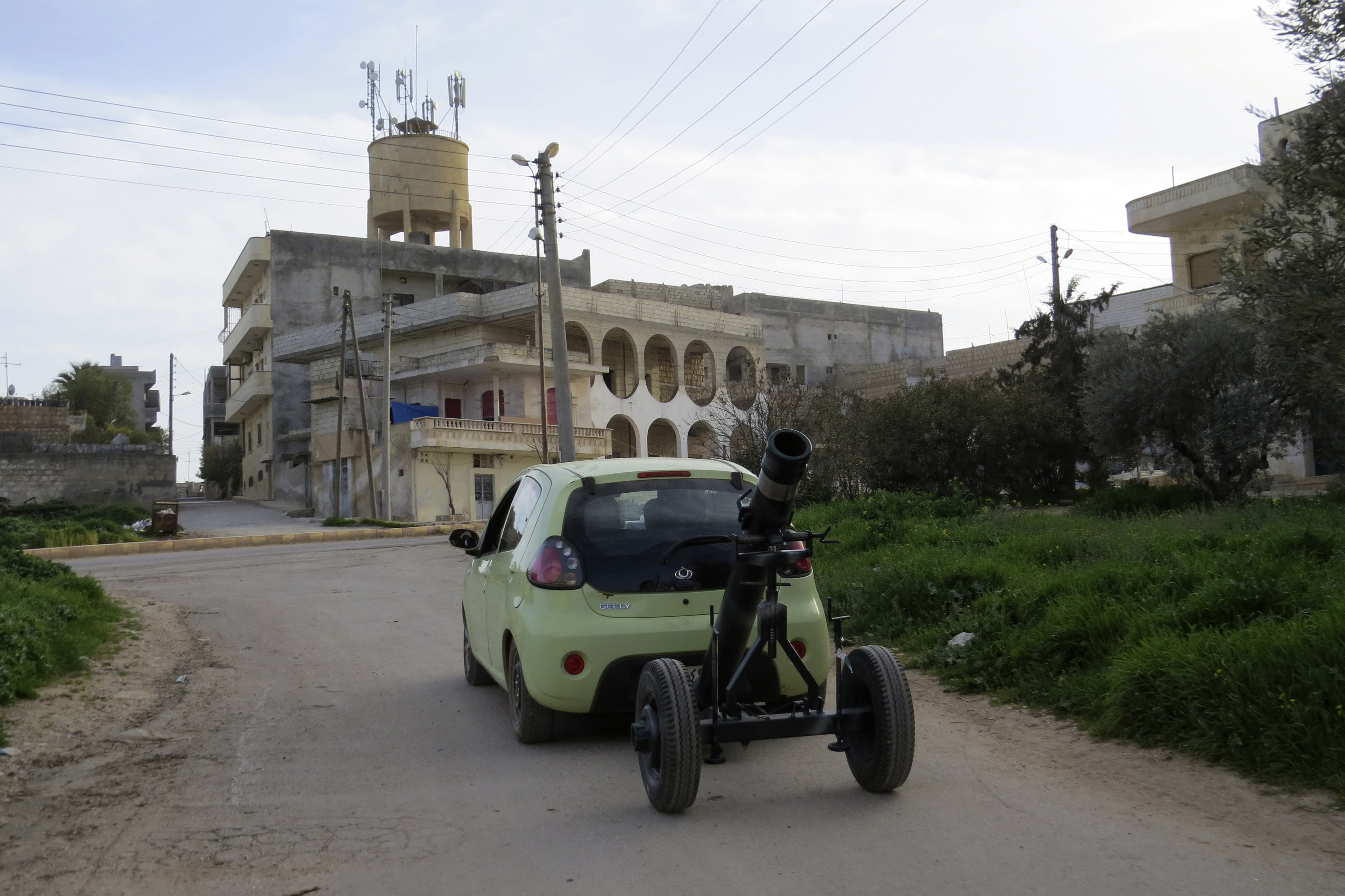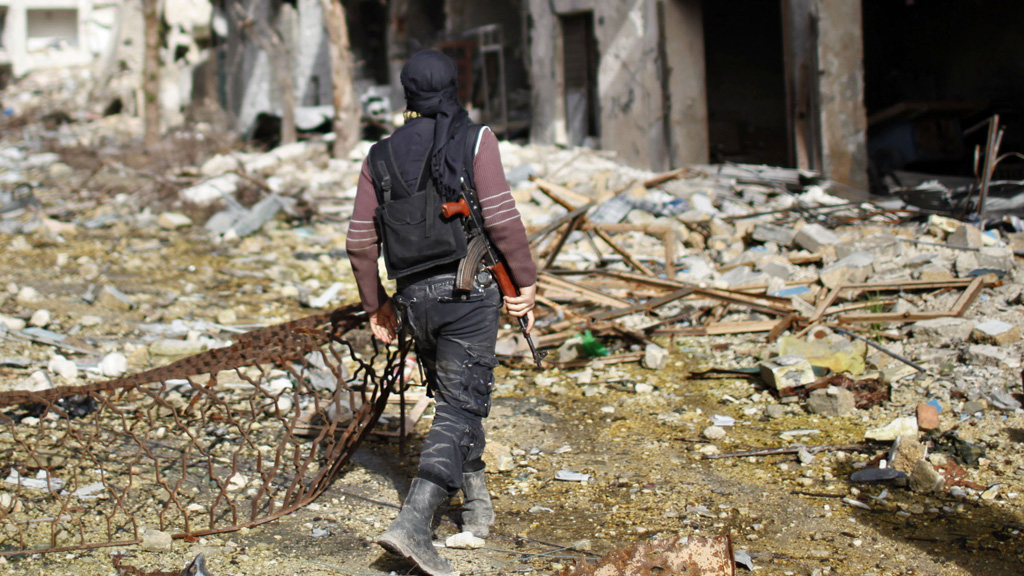The jihadist groups ‘running the show’ in Syria
Jihadists are increasingly prominent in the fight against the Syrian government, which has so far claimed over 70,000 lives. Channel 4 News maps the gains made by the most powerful groups.

The conflict began in March 2011 as a peaceful and legitimate protest against the ruling regime. Now, mounting evidence suggests that radical Islamist and jihadist groups, some with direct links to al-Qaeda, are increasingly in control of the opposition and “running the show” in key parts of the country, writes Channel 4 News researcher Kamal Kaddourah.
There are approximately 100,000 rebel fighters in Syria, and as many as half of those may be regarded as jihadists – fundamentalist fighters who believe that they are fighting a holy war. Many of the jihadists are believed to have been trained by al-Qaeda in Iraq.
These groups can be a different proposition from the “official”, western-backed opposition, the Free Syrian Army. Leaderships can comprise radical soldiers with battle experience from Iraq, Libya, Algeria, Afghanistan, Somalia and Chechnya.
Key groups
The main groups in question are the al-Nusra Front; the Ahrar al-Sham Islamic Movement; the Islamic Syrian Front; al-Farouk Battalions and the al-Tawheed and al-Haq Brigades. Between them, and often working together, these groups control many of Syria’s provinces.
Tactics and weapons
These groups are strategic and skilled in their use of weapons. Their successful seizure of arms from the Syrian army means that they are politically and militarily independent. And they are increasingly interlinked.

The jihadist groups are skilled in the tactics of guerrilla warfare, and they train their recruits to be mobile and ruthless.
They are adept at using the weapons and resources available to them, recycling redundant ammunition and even cooking phosphate to create new weapons. The weapons now at their disposal include landmines, rockets, IEDs (improvised explosive devices), anti-aircraft missiles, anti-tank rockets, cannons, scud missiles and sniper rifles.
They have shown themselves able to build bombs capable of destroying large army bases and convoys.
Ships with false names are used to convey arms into Syria from Libya, while small boats transport them from Yemen and the Lebanon.
They have besieged military complexes and destroyed tanks and warplanes. In the last six months, they have wreaked havoc on the Syrian army in regions including al-Riqa, Idlib, al-Hasaka, Damascus and Aleppo.
Smuggling routes
In addition to the significant number of weapons they have captured from the Syrian army, the jihadist groups are further strengthened by weapons smuggled into Syria from neighbouring countries.
Key among these weapons providers is Iraq, whose borders are the least heavily monitored of all the countries bordering Syria.
Weapons are conveyed over the border from Iraq in large trucks, or sometimes through Turkey. Ships with false names are used to convey arms into Syria from Libya, while small boats transport them from Yemen and the Lebanon, where al-Nusra has strengthened its ties with Sunni groups in the past six months.
Syrian rebels also smuggle arms from Jordan through the black market, despite that country’s tightly controlled borders.
It’s important to remember that jihadist groups in Syria are part of a wider Sunni revolution taking place in Iraq, the Lebanon and other parts of the Middle East.
Strategy
Jihadist rebels appear to be highly strategic. They have targeted airports, air defence bases, ammunition depots, army convoys and communications bases, as well as targeting members of the military leadership for assassination. They have also made targets of army check points and supply chains.
Al-Nusra and Ahrar Al-Sham, with assistance from other groups, have already seized five military airports and bases, and besieged another four airports (see map, above).
In the last six months, the jihadist groups have managed to destroy most of the army bases in Rif Damascus, Idlib, Aleppo, Deir al-Zor, al-Hasaka, al-Riqah and Homs.
Seizing control of and destroying the army bases not only allows the groups access to vast supplies of ammunition – enough to sustain them for months – it also spurs other groups and fighters to join them. Most importantly, it makes them independent politically and militarily.

The jihadist groups have been responsible for the shooting down of planes above Idlib and Aleppo provinces, where al-Nusra and Ahrar al-Sham have extensive control.
Having gained control of the Aleppo countryside, and the roads that link Aleppo to the Turkish border, the rebel groups’ aim to control the countryside in most of the provinces. They then aim to besiege the army-controlled areas in the big cities, isolating them from the rest of the country.
Al-Nusra specifically aims to banish the army from the eastern and northern provinces – al-Hasaka, al-Riqa, Deir al-Zor and Aleppo – and then turn its attention to gaining control over the roads leading to Aleppo and all routes to the capital, Damascus.
Read more: Syria asks UN to investigate chemical weapons claims
To do this, they must first seize Al-Safira, where one of the country’s most crucial military bases is located.
The struggle for al-Safira is likely to be one of the most ferocious battles between the Jihadists and the regime since the war began.
In addition to being the largest arms and munitions factory in the Middle East, al-Safira is one of the four main sites for the production of chemical weapons technology in Syria (the others are located near Hama, Homs and Latakia).




